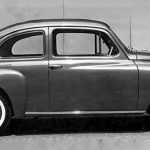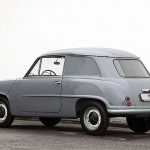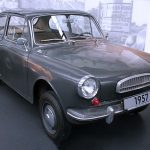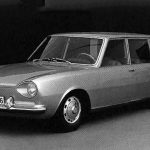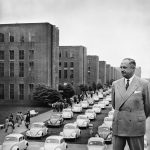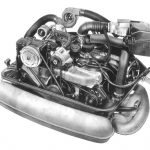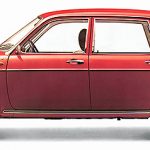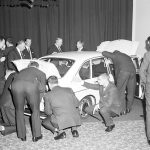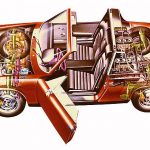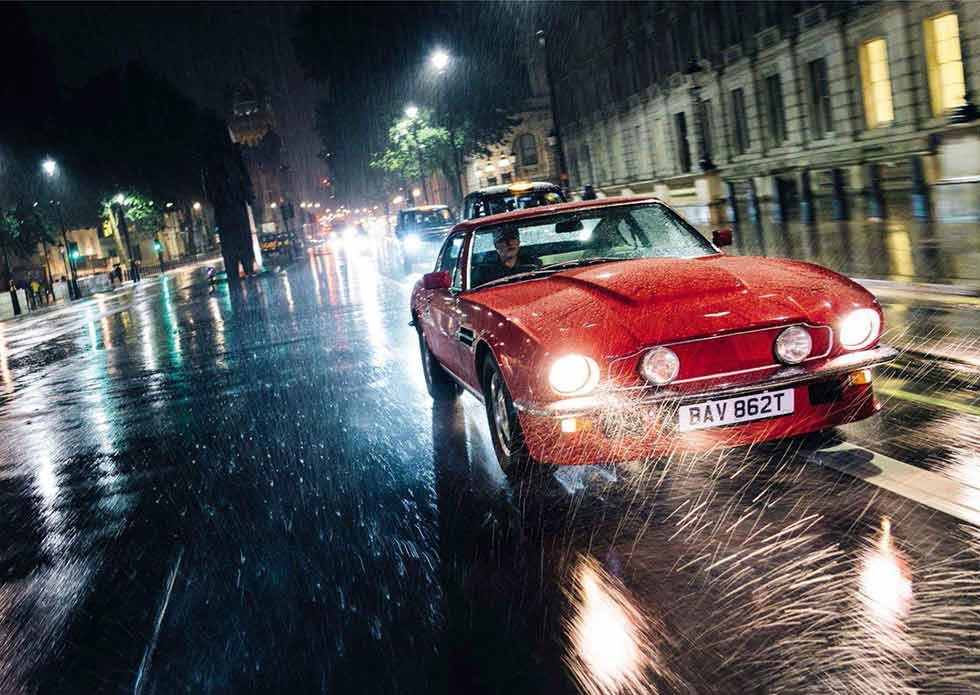
We drive Johnny English’s Vantage. Astons on film Johnny English Vantage. We meet the star of the new JE movie and chat to its co-star, Rowan Atkinson. Johnny English is back – at the wheel of a missile-equipped Vantage. We drive the car from the film – and its stunt double – and talk to Rowan Atkinson about his enduring love of ‘analogue Astons’. Words Peter Tomalin. Photography Dean Smith.
THE FULL ENGLISH
COVER STORY ‘JOHNNY ENGLISH’ VANTAGE
That is it with British secret agents and Aston Martins? Cinema audiences famously cheered during screenings of the Bond movie Skyfall when 007 opened his lock-up to reveal his beloved DB5. There were similar cheers during showings of the original Johnny English film when the titular hero launched a missile from his DB7 Vantage to take out an incriminating Gatso speed camera. There are missiles, too, in the new Johnny English film, the third in the series, which opens in early October. There is also, as you may have gathered by now, an Aston Martin…
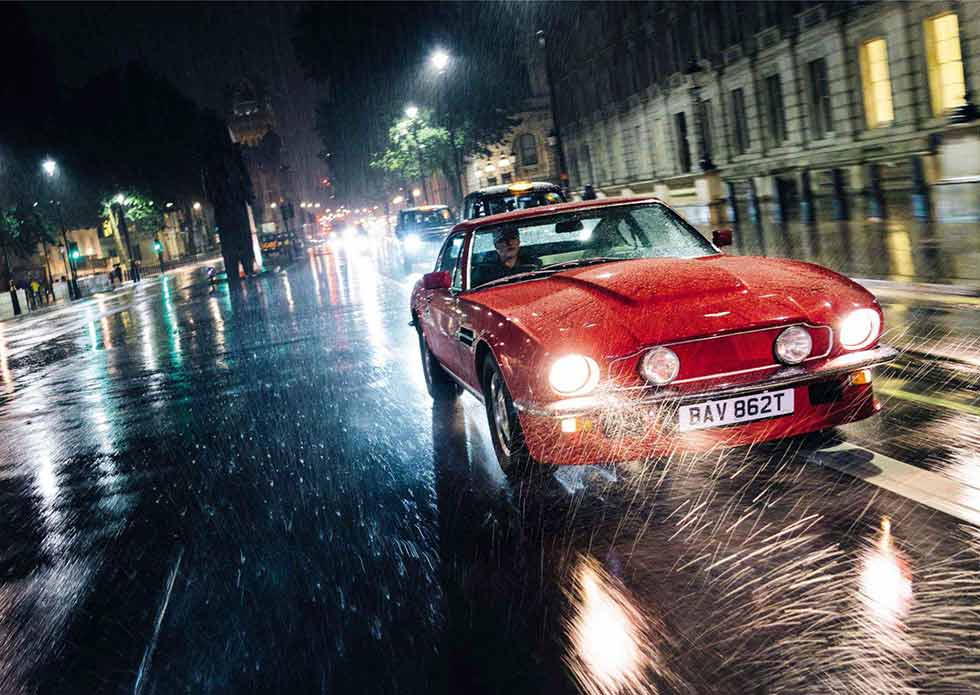
Johnny English has always been something of a Bond tribute act, which naturally enough extends to the cars and the gadgets. In his second outing, 2011’s Johnny English Reborn, our hapless hero had his head turned by a tricked- up, voice-activated Rolls-Royce Phantom Coupe. But in Johnny English Strikes Again, we find him back at the wheel of an Aston Martin. Or two Aston Martins, as we’re about to discover.
The Aston that gets most of the screen-time in the new film is the one you see here, BAV 862T, and right now I’m driving it across Vauxhall Bridge in central London towards the architectural absurdity that is the MI6 building. It’s a slightly surreal moment – and completely marvellous and rather nerve-wracking all at the same time. Not only is this the actual car from the movie, it’s also Rowan Atkinson’s personal property. Try not to break it, Tomalin…
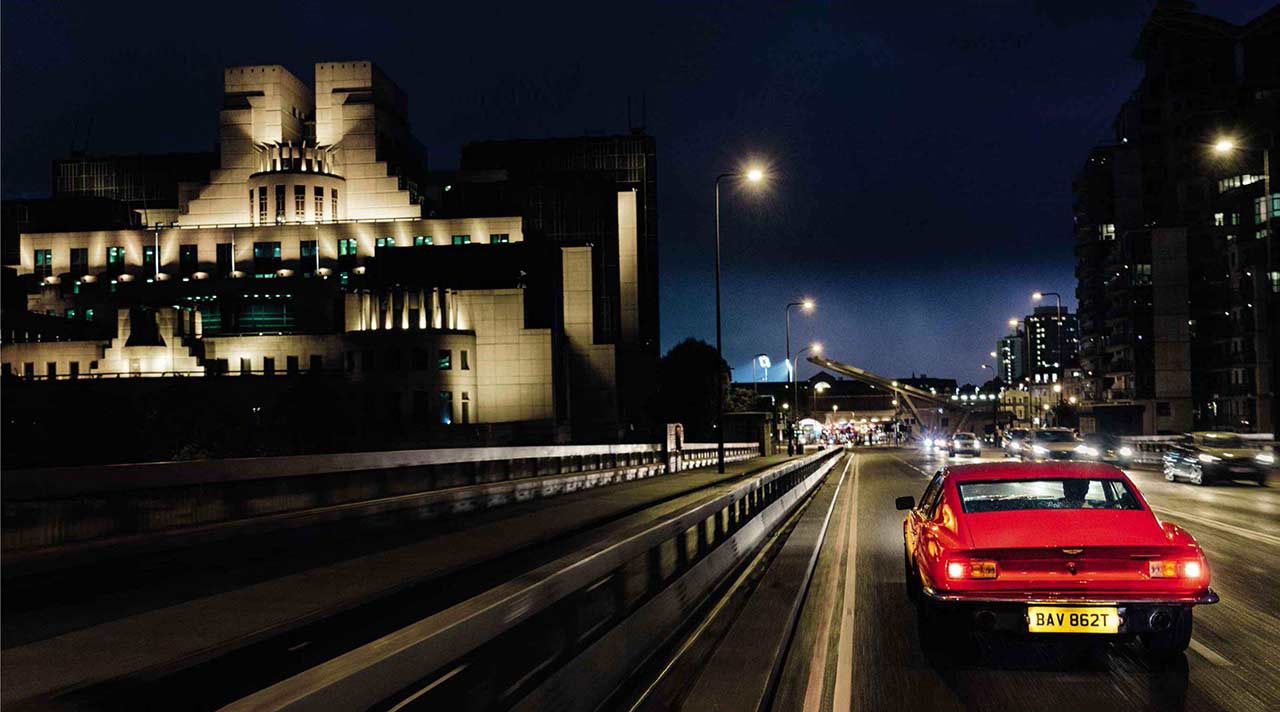
Spool back a couple of hours and I’ve just arrived at the impressive new HQ of Aston specialists Nicholas Mee & Co, nestled in the Hertfordshire countryside just outside the M25. Nick and his team have been looking after Rowan’s car ever since filming ended a few months ago. In that time it’s had a general health check, a gearbox rebuild and – most strikingly – a complete retrim in magnolia leather. Nick opens the driver’s door and invites me to stick my head inside the cabin. It looks – and smells – absolutely wonderful.
Nick’s relationship with Rowan goes way back, to the early 1980s, when the young comedic actor was enjoying the first fruits of fame and fortune – and just starting to indulge his love of slightly eccentric British sports cars. Nick himself, then sales director of Aston Martin, sold Rowan his very first Aston, a V8 of a similar vintage – and hue – to this one, though not a Vantage. It would be the first of a string of Astons that Atkinson would own over the next decade and a half and would seed a lasting affection for the classic V8s.
Hence the acquisition of this 1979 Vantage early last year. It’s an ‘Oscar India’ model, the variant introduced in October 1978 and identifiable in Vantage form by its integrated rear spoiler (rather than tacked-on ‘flip-tail’ spoiler of the earliest cars) and the lower, smoothed-over bonnet bulge where the early Vantages had a much bigger bump, originally designed as an air scoop but blanked-off for the performance flagship, as was the grille below.
The spec and colour combo are original – with one deviation. ‘On most Vantages of this period, the dash was covered in black vinyl, sometimes leather, which is what this one had,’ says Nick, ‘but Rowan decided to have a full retrim after filming and I showed him some pictures of a car we did in 1980, which had the whole lower dash in the interior colour, which happened to be magnolia, and he decided to go for that. I think it looks so much nicer.’
I agree. In fact as I settle into the newly upholstered driver’s seat and survey the impressive array of dials and switches set into the swathe of magnolia hide – including a period-fit graphic equaliser – it’s hard to imagine a late- 70s /early-80s Vantage has ever looked finer.
As dusk begins to fall, we set off for central London. In the new film, the Aston is briefly shown powering along Whitehall, so the plan is to head there after we’ve bagged the MI6 building. But before we plunge into the metropolis, there’s a decent run across country and a couple of dual-carriageways on which to stretch those 170mph legs.
The Vantage has an aura of brutishness, and the triple-Weber-fed engine catches with a deliciously throaty roar, but in fact it’s not scary at all. The clutch bites progressively and it’s easy to trickle away on a breath of revs; the assisted steering is weighty but manageable, and while the gearshift with its dogleg first – across to the left and back – requires a little deliberation and is long of throw, the more you relax with it, the easier it gets. Brake and throttle pedals are even ideally placed – and the brake pedal firm enough – to indulge the odd heel-and-toe downshift.
Through roundabouts and sequences of turns, the big Aston reacts smartly enough to steering inputs but you’d never mistake it for a sports car. That said, while you sense the weight (close to two tons fuelled), it never feels unwieldy. The Vantage is often described as Britain’s first supercar, but I reckon ‘super-GT’ fits it better: think of it as the grand-daddy to the Vanquish (both generations) and the DBS Superleggera.
Stealing every scene, as so often with Astons of this period, is the engine. It fluffs a bit on part-throttle, but drive through the hesitation and it pulls with increasing vigour. There’s a real bark to it at higher revs, a reminder that as well as powering several generations of Aston road cars, this magnificent quad-cam all-alloy V8 led a double life under the bonnets of various racing cars.
What’s every bit as impressive is that it behaves itself impeccably when we hit the West End. This is just as well because, although it’s now getting dark, the roads are still pulsing with traffic. And everywhere we stop to take photos, the Aston draws a small crowd of admirers. One woman tells us that she’s a retired freelance photographer. ‘I shot an Aston Martin once, for The Times,’ she tells us. ‘It belonged to the actor Rowan Atkinson and it had just been in a film.’ Honestly, you really couldn’t make it up.
No question, the Vantage has star quality in spades, but why would an MI7 agent be driving a 1979 Aston Martin in 2018? Surely Johnny English would be issued with the very latest model – a new Vantage, perhaps. When I catch up with Rowan in mid-August, just days after post-production on Strikes Again has finally been completed, he talks me through the plot – and all becomes clear.
‘The theme is analogue versus digital,’ he explains. ‘The start of the story – which might not be a million miles away from the plot of Sky fall – is that all the serving agents from MI7, as we call ourselves, have been compromised and exposed, and they need someone to find out who’s doing it, but there are no agents left, and Emma Thompson, who plays the Prime Minister, says: “Well, bring back an old one…”
‘That’s the cue for Johnny English – who’s been in an espionage backwater at a prep school in Lincolnshire, where he’s the geography teacher – to become involved. So he reunites with his sidekick, Bough, played by Ben Miller, as he was in the first movie. It’s not quite The Dirty Dozen, but it does have this getting-the-old-gang-back-together thing.
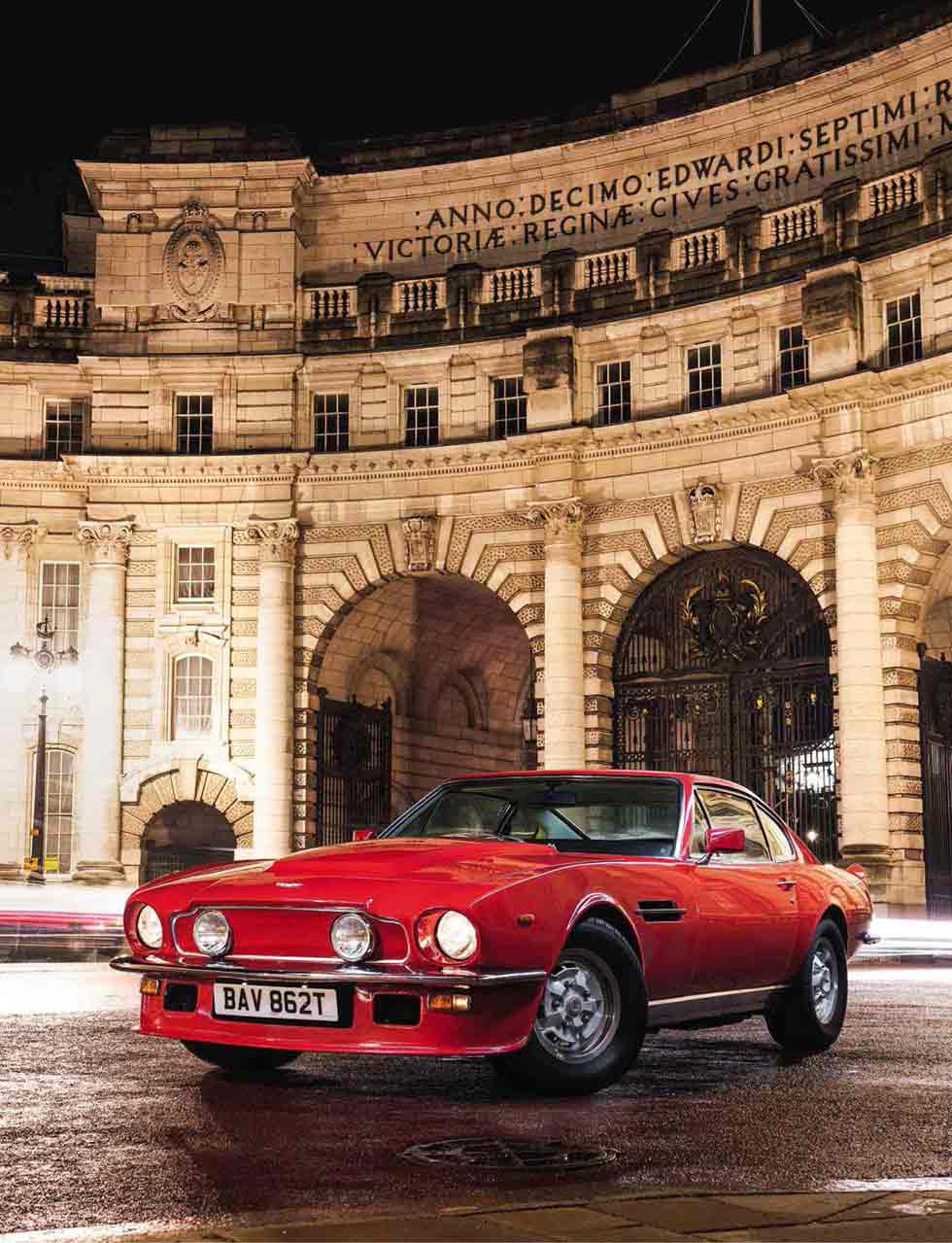
‘The villain is hacking into various British institutions, so the decision is taken to have an analogue approach to a digital problem. Part of the strategy is that Johnny English needs to drive a car that has no navigation systems, no engine management systems, no way of detecting where you are and what you’re doing. So we renounce mobile phones – and we’re in a 1979 Aston Martin Vantage… bearing a remarkable resemblance to one I bought only a few months before filming started.’
It’s not the first of Atkinson’s personal cars to appear in one of his films. There was the powder-blue V8 Vantage Zagato that featured in the 1989 film The Tall Guy, also starring Jeff Goldblum and – coincidentally – Emma Thompson, doing very un-Prime Ministerial things in one particular scene, as I recall.
‘The DB7 V12 Vantage from the first Johnny English film wasn’t mine, though I could have kept it,’ he reflects. ‘I did try to buy the V16-engined Phantom Coupe from the previous Johnny English movie, but BMW, unsurprisingly, were uninterested.’
Rowan bought this Aston at the beginning of 2017, and filming started a few months later. ‘I can’t remember if I bought the car with the film in mind – whether the chicken followed the egg or not – but I’m pleased that the film has got me back into late-70s /early-80s Astons. I do have a soft spot for the Astons of that era.
‘It’s something to do with the fact that when I was buying Astons in the ’80s they were making 180 cars a year. It was a nicer kind of feeling; the feeling of a smaller club. I always like the left-field choices – not that the Vantage is a left-field choice any more, in fact it’s very much in demand.
‘This one is almost exactly the same colour scheme as the first Aston Martin I bought in 1981, which was a manual V8 in Storm Red with a light beige interior. And this is definitely a woodless car. I quite like that slightly stripped-down, aesthetically less luxurious early Vantage, though we’ve done this slightly sacrilegious thing where the dash is no longer black leather but magnolia. I think it looks better that way, even though for originality I should have left it as it was.
‘As a very early Oscar India, it was also sold without headrests, but I’m having them fitted as a bit of a nod towards passenger safety. It’s another way I’ve desecrated the originality of the car! But I’m not a collector, I’m a user. A car is to be used, and if I have a car, I use it as much as I reasonably can.’
Vantages of this period are certainly useable. Not least because, despite appearances and unlike most modern super-GTs, they’re narrow enough to enjoy on country lanes and also to thread through city back-streets. And, of course, they’re more than refined enough for an occasional sortie further afield, should the fancy take you – or should Queen and country require it.
In the movie, Johnny English and Bough set off for the south of France, where they encounter a Russian agent played by Olga Kurylenko (another Bond connection – Kurylenko played opposite Daniel Craig in Quantum of Solace) in a BMW i3s. A chase ensues – it’s that analogue versus digital thing again – but it all goes wrong for Johnny because he misjudges a Vantage’s thirst for fuel. It’s easily done. There’s then a high-speed dash back to England, which includes a visual joke involving a speed cop. That might well get a cheer in cinemas, as might the scene – teased in the official trailer – in which English and Bough find their progress through France impeded by a peloton.
‘Arm the missiles,’ says English, with relish. ‘But they’re just cyclists, sir,’ protests Bough. ‘They’re French cyclists, and they’re obstructing Her Majesty’s Secret Service,’ comes the reply. A missile is launched, releasing a cloud of tear gas that leaves the cyclists floundering and allows the Aston to nip past. Clearly no cyclists were harmed in the making of this joke, but I hope Atkinson knows what he’s doing, making merry at the expense of cyclists. Hardline Islamists may turn out to be pussycats compared with fundamentalist bicyclists.
Back in London, and nearing the end of our shoot, we find a delivery truck blocking our way, the driver attempting to park nose-first in a bay clearly half a size too small. It’s been a long night and we’re really quite keen to get home. Where are those missiles when you need them?
DBS/DBS V8 1967-1972
SPECIFICATION
Engine 3995cc, in-line 6
Power 282bhp @ 5500rpm
Torque 288lb ft @ 3850rpm
0-60mph 8.4sec
Top speed 140mph
The DBS ushered in a whole new look for Aston, its modern lines the work of Englishman William Towns. It was also supposed to introduce Tadek Marek’s all-new 5.3-litre V8 engine, but that wasn’t ready in time, so the DBS was launched with the familiar straight-six from the DB6 (the two models ran concurrently for three years). The 310bhp V8 was finally available from 1970, but the six-cylinder continued until 1972 as the entry-level Aston. Some 787 six-cylinder DBSs were produced, and 402 V8s. Buying guide, Vantage issue 2.
AM V8 1972-1990
SPECIFICATION
Engine 5340cc, V8
Power 310bhp @ 5500rpm
Torque 360lb ft @ 3500rpm
0-60mph 5.7sec
Top speed 155mph
If the ’60s were Aston’s golden era, the ’70s saw the glow fade with frequent financial crises. David Brown had sold up, so the DBS V8 became the AM V8, its convertible sibling the V8 Volante and the troublesome fuel injection system was dropped in favour of four Weber carburettors. Early cars had around 310bhp, but emissions regs saw that figure diminish through the decade. The company’s lack of cash meant the V8 would soldier on for almost 20 years, in which time 4021 were built. Volante buying guide, Vantage issue 4.
Lagonda (Series 1) 1974-1976
SPECIFICATION
Engine 5340cc, V8
Power 280bhp @ 5500rpm
Torque 301lb ft @ 3500rpm
0-60mph 6.2sec
Top speed 149mph
Based on the AM V8 but with a stretched wheelbase, the 1974 Lagonda saloon was the first car since the 1961 Rapide to wear the Lagonda badge, and it was not a success. Most of the blame can be attached to the 1974 oil crisis, which seriously limited the appeal of any V8-powered supersaloon, let alone one that would rarely see mpg in double figures. In fact the Lagonda was an impressive and capable machine, but during the two years of production just seven were sold (though another was later assembled from parts).
V8 Vantage 1977-1989
SPECIFICATION
Engine 5340cc, V8
Power 375bhp @ 5500rpm
Torque n/a
0-60mph 5.3sec
Top speed 170mph
Often described as ‘Britain’s first supercar’, the Vantage of 1977 was based on the AM V8 but was now a model-line in its own right. With a 375bhp version of the 5.3-litre V8 (later 405bhp) and a top speed of 170mph, it was pitched head-to-head with the Ferrari Boxer and Lamborghini Countach for the title of world’s fastest car. Distinguished by its blanked-off grille and bonnet scoop, deep air dam and bootlid spoiler, it certainly looked the part. By the time production ended in 1989, 534 had been built, 192 of them Volantes.
Tech and photos
1978 V8 Vantage (‘Oscar India)
ENGINE V8, 5340cc
MAX POWER c390bhp @ 6500rpm
MAX TORQUE c400lb ft @ 5000rpm
TRANSMISSION Five-speed manual, rear-wheel drive, limited-slip differential
SUSPENSION Front: double wishbones, coil springs, telescopic dampers, anti-roll bar. Rear: de Dion tube, trailing arms and Watt’s linkage, coil springs, telescopic dampers, anti-roll bar
STEERING Rack-and- pinion, power-assisted
BRAKES Vented discs, 275mm front, 264mm rear
TYRES 255/60 VR15 front and rear
WEIGHT c1800kg
POWER TO WEIGHT 220bhp/ton
0-60MPH 5.2sec
TOP SPEED 170mph
PRICE NEW £23,000 in 1978 (£137,000 in today’s money)
Opposite and above Late-70s Vantages had a quartet of Weber 49 IDF/3 carburettors under the bonnet; in the new movie, Johnny’s Aston packs a little added firepower. Above right: English encounters Russian agent Ophelia (Olga Kurylenko) in a BMW i3s
‘THE VANTAGE HAS AN AURA OF BRUTISHNESS, BUT IN FACT IT’S NOT SCARY AT ALL’
Left, above and right Atkinson reprises his role as the world’s worst secret agent in the third Johnny English movie, this time at the wheel of a 1979 Vantage, which features in a number of scenes. The ‘hero car’, used for most of the film, is this one – Atkinson’s own personal car, now freshly retrimmed with a non-original magnolia leather dash.
COVER STORY THE ‘EFFECTS CAR’
Ah, there they are. The missiles, that is. Another day, another location, and I’m back at the wheel of Johnny English’s Vantage. Except that there are a few important differences. The keen-eyed among you might have observed that – just like James Bond’s DB5, English’s Vantage appears to have the ability to switch number plates. Rather more impressively – though I’m struggling to see the benefit in a high-octane car chase scenario – it also appears to have a function that changes the leather on the facia.
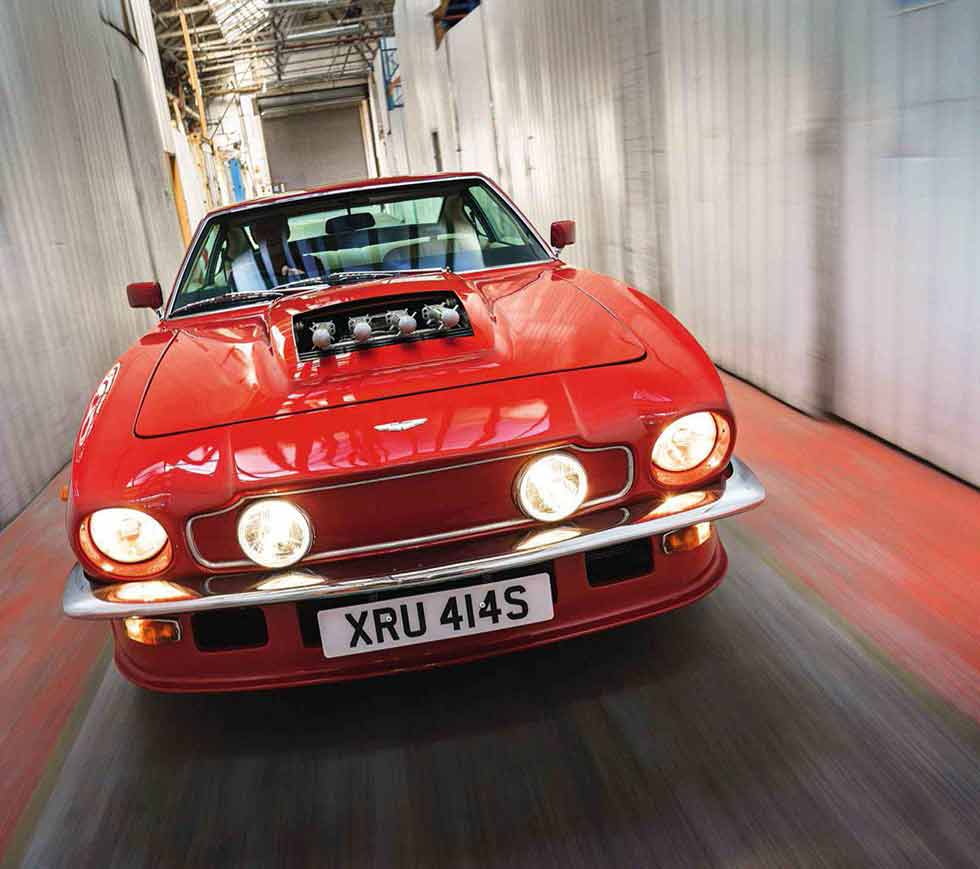
Below the dash, the centre console houses all the usual AM switches – spot lamps, hazards, interior lights, horn (for toggling between town ‘peep’ and country ‘parp’, a genuine Newport Pagnell period fitment, not an MI7 modification) but there’s also a small blue metallic box with some additional ones. These extra switches are marked ‘tear gas’, ‘nerve gas’ and ‘launch’.
As you’ve probably deduced by now, the film crew on Johnny English Strikes Again used not one but two Astons. Rowan Atkinson’s personal car was the ‘hero car’ used for the glamour shots, but there was also an ‘action’ or ‘effects car’, which was used whenever a stunt double was required or the gadgets deployed.
XRU 414S is that car. At a glance it’s a dead ringer for Atkinson’s Vantage, but all is not what it seems. It is, in fact, a regular V8 saloon, dressed up to look like a Vantage. That’s the movies for you.
Rowan elaborates: ‘We needed a matching car, and we found a 1978 V8 saloon, which crucially had a manual gearbox. While a manual was standard-issue on the Vantages, it was very rare on the V8. It was, if memory serves, dark blue with red leather, so it was repainted the same colours as mine and doubled as the action car.’
The body and trim shops did a good job. The deep chin spoiler and blanked-off grille with its inset spot-lights and the kicked-up bootlid spoiler (the whole bootlid skilfully rendered in glassfibre on closer inspection) would fool many an Aston fan. If it wasn’t for the number plates – the V8 saloon having been reunited with its DVLA registration since filming finished – I’d certainly be fooled. Rowan says he can pick out which car is which in the film, but I reckon most people wouldn’t spot the joins. Even the details are right – including the spar on the wing vent being plain and not having a ‘Vantage’ script (neither does Rowan’s. It was a cost saving at a time when Aston was going through one of its habitual financial crises.)
A row of missiles would be a bit of a giveaway, but when we arrive at AVM International, the Cheltenham storage facility where XRU has been lodging since filming ended, they’re hidden from view. Not under the bonnet, waiting to be deployed at the press of a switch. Alas, the actual process is rather less glamorous: the rockets, and the rig to which they must be attached, are being ferried up from Ascot in the back of a Transit van by special effects technician Matt Lewis.
Matt was part of the crew who worked on Strikes Again under the direction of special effects wizard Richard Van Den Bergh. Matt himself has worked on dozens of films, including the Bond movie Spectre and everything from Dunkirk to the latest Jurassic Park epic, for which he created a lifesize animatronic T Rex. So he should be right at home with a dinosaur like this V8 Aston.
‘On the Johnny English film, my role was mostly at Pinewood,’ he tells me. ‘Some of the other boys built this rig, but I did help them put it together once or twice, so I know how it comes together.’ He also reveals that in an earlier life he was a motor mechanic, and he certainly knows his way around the Aston’s engine compartment.
To install the rig, the first task is to swap the standard Vantage bonnet (as with the bootlid, recreated in glassfibre) for one with a square aperture, taken from a rack of bonnets that are kept with the car. Next, off comes the substantial airbox that sits on top of the quartet of Weber carburettors. ‘For the static rig, we just had to take the air filters off,’ says Matt. ‘For the full firing rig we had to take the carburettors off, too, to create space for the mechanism to work.’ The car would be filmed while being towed on a low-level trailer for those scenes.
No full firing rig today, but it does at least mean that we can get some images of the Aston moving under its own steam – and I can find out what it’s like to drive an Aston Martin in which the view down the bonnet is even more exciting than is usually the case.
What immediately becomes apparent as I settle into the driver’s seat and glance around the interior is that this car has led a rather harder life than Atkinson’s Vantage. Look closely and there are bits of wiring poking out from under the seats and behind the sun visors, while some of the trim is tacked quite crudely in place. As the early-August sun beats down, it’s also bakingly hot in here – later I discover why my attempts to summon a trickle of cool air have been fruitless when I find the air-con compressor lying in the boot, removed presumably to free up some more underbonnet space.
Cosmetically, it looks the part. Mechanically, it feels a little, well, baggy. The engine roars into lusty life but, unsurprisingly, farts and spits quite a bit without the airbox. There’s also an occasional dull, heavy clonk from the differential when you reverse, and the brakes require a fair bit of pumping to firm-up the pedal. It feels very well- used – which, of course, it is.
But boy, what a thrill to edge out of the compound where Matt has been fitting the rig and onto the service roads that run through the industrial estate. Workers from the various businesses here are just emerging for lunch and everyone stops, stares and smiles at the big red Aston. Even a standard Vantage tends to have that effect; add rocket launchers and everyone stops in their tracks. One girl wanders over when we stop to set up the next shot. ‘This,’ she says, ‘has to be the coolest car ever.’ I suspect 007 fans might beg to differ, but it is tremendous fun.
A couple of additional gadgets didn’t make the film. ‘We were going to have nerve gas coming out if you opened the boot,’ Atkinson reveals, ‘and there was a scene written for that. But in cutting down the movie the other gadgets were the first casualties, sadly, to make way for the plot.’
I’m intrigued to know more about the film-making process, and a couple of days later manage to grab a few minutes on the phone with producer Chris Clark, who has worked on all three Johnny English movies: he produced 2011’s Reborn and co-produced the original film back in 2003. This one, he tells me, was a joint production with Tim Bevan and Eric Fellner, co-chairmen of production company Working Title Films, although right from the start the film’s star was also closely involved.
‘We started developing this one about three years ago,’ Clark tells me. ‘It starts with us talking about the theme and what the potential story might be – which usually means talking about the villain – and we start to brainstorm and discuss comic set-pieces. All in conjunction with the writer – so it’s me, Tim Bevan, the writer and Rowan sitting around a table. Then the director will join when we’ve got a script. Usually it’s all about finding the tone of the film and the thematic underbelly. This time we liked the idea of digital versus analogue, which leads us perfectly to the Aston.
‘Rowan was very specific about wanting to use the Vantage. He suggested it very early on, and it was actually mentioned in the script. The cars are always characters in the films that Rowan is in.
‘So his own car would be the hero car, and a company called TLO, who supply and service all the vehicles, helped source the second car. It did get bashed up pretty badly during the making of the film, though in fact both cars behaved extremely well. We started shooting last summer, and scenes were shot in London, on the south coast of England, on roads in the south of France, and a lot on the Cote d’Azure.’
And what’s Atkinson like to work with? He’s often described as a perfectionist. ‘Well, he is – but that’s part of what makes him so brilliant,’ says Clark. ‘His perfectionism extends not just to his performance but to every aspect of the production, making sure it’s exactly as he wanted it to be. He’s extremely hardworking and an all-round nice guy, too.’ And keen, I imagine, to get behind the wheel?
‘I think it’s fair to say that he does more driving than the lead actor would normally be expected to do. There’s one scene where the car arrives in France and spins its rear wheels – on most movies that would be a job for the stunt drivers, but that’s Rowan at the wheel.’
And what fate awaits the effects car? In the short term it will remain the property of Working Title Films. One day, I suspect, it will have a thorough mechanical overhaul. It may be returned to its original spec as a standard V8. It may even come up for sale as ‘The Johnny English Vantage’. If you ever find yourself bidding for it, just check that all the extras are included.
Johnny English Strikes Again opens in cinemas on October 5.
Above and below A little movie-making magic and a dark blue V8 saloon becomes a bright red, fire-breathing, missile-firing Vantage. Below: on location, Atkinson and Aston (but which one?)
Above and below Technician Matt Lewis fits the missile rig; rack of bonnets accompanied the car during filming – made from glassfibre to make swapping them over less of a physical chore. Below: non-standard switchgear.
‘THE VIEW DOWN THE VANTAGE’S BONNET IS EVEN MORE EXCITING THAN IS USUALLY THE CASE’


